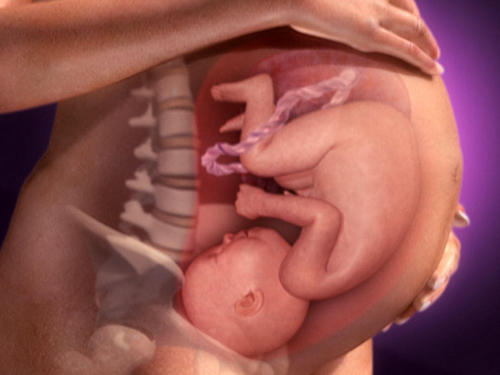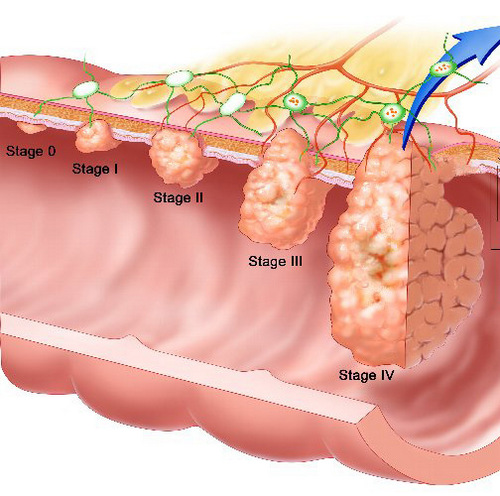The word ‘menopause’ comes from the Greek words ‘menos’, meaning month, and ‘pause’, meaning to cease. So, menopause means the ‘monthly’ (the period) stops.
What is menopause?
Menopause is the final menstrual period. Sometimes you only know you have had your final menstrual period if you have had no period for 12 months, as periods can occur very irregularly leading up to menopause and can happen months apart.
What happens at menopause?
Women are born with about a million eggs in each ovary. By puberty about 300,000 eggs remain, and by menopause there are no active eggs left.
On average, a woman in Australia will have 400-500 periods in her lifetime. From about 35-40 years of age, the number of eggs left in your ovaries decreases more quickly and you ovulate (release an egg from the ovary) less regularly until your periods stop. Menopause means the end of ovulation.
Hormones & menopause
Hormones are chemicals made in your body, that relay messages through your bloodstream. They alert the body that it is time to do something. They help control many of the body’s functions, such as temperature, growth, energy, repair of cells, reproduction, sexual function and digestion. Hormones tell the body to eat, to stop eating, to sleep, to wake up, to grow, or – when hormone levels decrease – to stop growing.

The three hormones of particular relevance at menopause are:
- oestrogen
- progesterone
- testosterone.
Menopausal symptoms are created by changes in the levels of these hormones. These changes usually happen over months or years as you approach menopause. If you have menopause induced by surgery or cancer treatment, there can be a sudden drop in some of these hormones, causing symptoms to be more severe.
Oestrogen
The hormone oestrogen is made up of a group of three hormones: oestradiol, oestrone and oestriol. It is produced from the cells around the eggs in your ovaries.
Oestrogen works in the vagina, uterus, skin, bowel, liver, heart, blood, brain and throughout most of the body. Oestrogen helps to maintain muscle tone, the endometrium (lining of the uterus or womb), the cervix (the lower, narrow part of the uterus where it joins the vagina), the ducts in the breasts, and it helps in the protection of our bones.
The production of oestrogen fluctuates during the transition, or perimenopause. The production of oestrogen can increase because ovulation can occur twice in some perimenopausal cycles. This can lead to very high hormone levels, but, at other times in perimenopause, hormone levels can be very low. As the final period nears and egg numbers decrease, oestrogen levels drop, falling by as much as 90% at the menopause.
Progesterone
Progesterone, another natural female hormone, decreases towards menopause. This is because progesterone is produced only if an egg is released (ovulation). The release of progesterone usually prepares the uterus for a fertilised egg and pregnancy. With menopause, ovulation stops, and so progesterone levels drop.
Progesterone is responsible for changes to mucus in the cervix, from thin to thicker. It reduces acidity levels in the vagina, works on milk cells in the breasts, and can make us moody.
Approaching menopause, progesterone levels fall. During these anovulatory (no ovulation) cycles, women might experience heavy, irregular bleeding along with menopausal symptoms because of the hormonal fluctuations.
Testosterone
Testosterone is produced by the ovaries and in other parts of the body, such as the adrenal glands, which sit above the kidneys.
We often think of testosterone as more of a male hormone, particularly because of its influence on hair growth and the voice. However, testosterone is also an important female hormone. It has a role in women’s sexual desire and arousal, overall emotional wellbeing, and bone and muscle strength.
Rather than its levels dropping suddenly or dramatically at menopause, testosterone decreases gradually with age. In some women, levels fall by half between the ages of 20 and 40 years.
There is still a lot to learn about testosterone, particularly about how it works in women and its impact on sexuality.
When does menopause occur?
Most women reach menopause between 45-55 years of age, and the average age for women in Australia to reach menopause is 51-52 years. Some women will have a later menopause, at up to 60 years of age, especially if there is a family history of late menopause.
Menopause sometimes occurs earlier than expected as a result of cancer treatment, surgery or unknown causes. This is discussed further in ‘Causes of menopause’.
The stages of menopause
Menopause is often considered in stages:
Perimenopause
Features:
- The transition or lead-up to menopause (running out of eggs)
- Lasts an average of 4-6 years, but can be as short as one year or as long as 10 years
- Periods start to ‘wind down’ and become less regular
- Periods can be lighter or heavier, last for longer or finish earlier than they used to
- Menopausal symptoms often gradually begin during this time.
Many women talk of perimenopause as a time of hormonal ‘chaos’. Hormone levels, particularly oestrogen, can swing erratically from high to low. This is because the ovaries are beginning to run out of eggs, which affects hormone levels. The pituitary gland produces higher levels of signalling hormones – follicle-stimulating hormone (FSH) and luteinising hormone (LH) – to the ovaries in an effort to keep the ovaries producing eggs and oestrogen levels normal. During this time, ovulation (the release of an egg) might occur twice in a cycle, the second time during a period. This can lead to very high hormone levels. In other cycles, ovulation might not occur at all.
Diagnosis of perimenopause
There is no test to diagnose perimenopause. It is best identified by considering:
- Changes in the nature of your periods, such as:
- how frequent they are now and if that has changed
- how long they last and if that has changed
- how light or heavy they are and if that has changed
Signs & symptoms of perimenopause
Because of the hormonal swings during perimenopause, this is the time many women experience the most symptoms.
- Symptoms of perimenopause – are you experiencing:
- hot flushes?
- mood changes (low or swinging mood/irritability/anxiety)?
- decreased ability to do your normal activities/inability to cope?
- increasing forgetfulness?
- migraines?
- increasing aches and pains?
- bloating?
- sore or tender breasts?
- worsening symptoms?
Talk to your doctor if you experience:
- changes in the pattern of your periods
- increasingly heavy periods
- long periods of more than 8 days
- periods that come less than 3 weeks apart
- periods that come more than 2-3 months apart
- painful periods causing you to stay home
- bleeding between or after periods, or after sex
- any of the above listed perimenopausal symptoms.
Management of perimenopause
Depending on your symptoms and medical history, the following may be suitable treatment and management options:
- combined oral contraceptive pill (OCP)
- menopausal hormone therapy, or MHT (formerly called hormone replacement therapy, or HRT)
- Mirena® – progestin-releasing intra-uterine device (IUD) for heavy bleeding
- natural therapies (see an accredited naturopath).
Contraception can still be important if you are sexually active, as an egg is still released in around one in three cycles during perimenopause, and sometimes twice in a cycle, so this is important to discuss with your doctor if you are not intending to become pregnant.
For more information go to ‘Menopause management’.
Menopause
Menopause is defined as your final menstrual period, but because periods can be very irregular and can occur even months apart as you approach menopause, you really know that you have had your final menstrual period only if you have not had a period for 12 months.
Postmenopause
Postmenopause is the time after menopause. A woman can experience menopausal symptoms in postmenopause. How long this continues varies for each woman.
| Menopause | Postmenopause | ||||||||||||
| Final menstrual period | 1 | 2 | 3 | 4 | 5 | 6 | 7 | 8 | 9 | 10 | 11 | 12 | |
| No periods for 12 months | |||||||||||||
Diagnosis of menopause
It can be difficult to know when your period is your last. You might not have a period for some months and have symptoms of menopause, such as hot flushes, sweats, sleep disturbance, dry vagina, crawling feelings under the skin or mood swings. This means you are probably perimenopausal. Menopause has definitely occurred if it has been 12 months since your last period. However, sometimes bleeding stops for other reasons. If you don’t have typical menopausal symptoms, are younger than 45 years, or have other symptoms that don’t fit the picture of menopause, then you should seek medical advice.
Is there a test to diagnose perimenopause or menopause?
Blood tests
Blood tests won’t tell you when your final period is going to happen and won’t help you manage your perimenopause, or what follows. During the perimenopause, hormone levels vary widely and can be low one day and within the normal range the next. Follicle-stimulating hormone (FHS) from the pituitary gland increases during the perimenopause and reaches its peak 2-4 years after the final period and stays elevated for the rest of your life. Oestradiol, the main female hormone, drops to its lowest level 2-4 years after the final period and remains low for the rest of your life.
A definite diagnosis of perimenopause is not possible using hormone levels because oestradiol and FSH levels can fluctuate markedly throughout the cycle, from day to day.
Hormone levels are not useful for the diagnosis of the menopause either, as menopause is usually said to have happened if a woman describes 12 months of having no periods, with or without typical menopausal symptoms, and if she is at the typical age of menopause (between 45-55 years).
In some unusual situations, such as in women younger than 45 whose periods are irregular or have stopped, a doctor will measure hormone levels. Outside of such situations, hormone levels are not very helpful and won’t change the advice a doctor will give you about treating menopausal symptoms.
A new blood test to measure a different hormone, anti-Müllerian hormone (AMH), is being studied to see if measuring egg or follicle activity can predict menopause. Currently, it is only useful in investigating fertility, and more research data are still needed to see how helpful this test is in predicting the age menopause will occur.
Saliva tests
Saliva tests are not accurate and not worth buying. Once again, the level of hormones tested can differ from day to day and cycle to cycle, and are therefore not accurate or helpful.
The best test so far
Currently, the best way to predict menopause is to use the symptoms you have as a guide to whether you are close to menopause. If your periods are irregular or have stopped for some time, or if you are experiencing symptoms such as hot flushes and they are gradually getting worse, these signs are likely to be better indicators than blood or saliva tests that you are getting closer to menopause.
When to see your doctor
- If you are troubled by irregular cycles
- If you are worried about heavy bleeding/bleeding abnormal to you/bleeding between periods and/or after sex
- If you have increased PMS (premenstrual syndrome) symptoms and/or pain
- If you have some of the symptoms of menopause, such as hot flushes, that interfere with your daily life.



